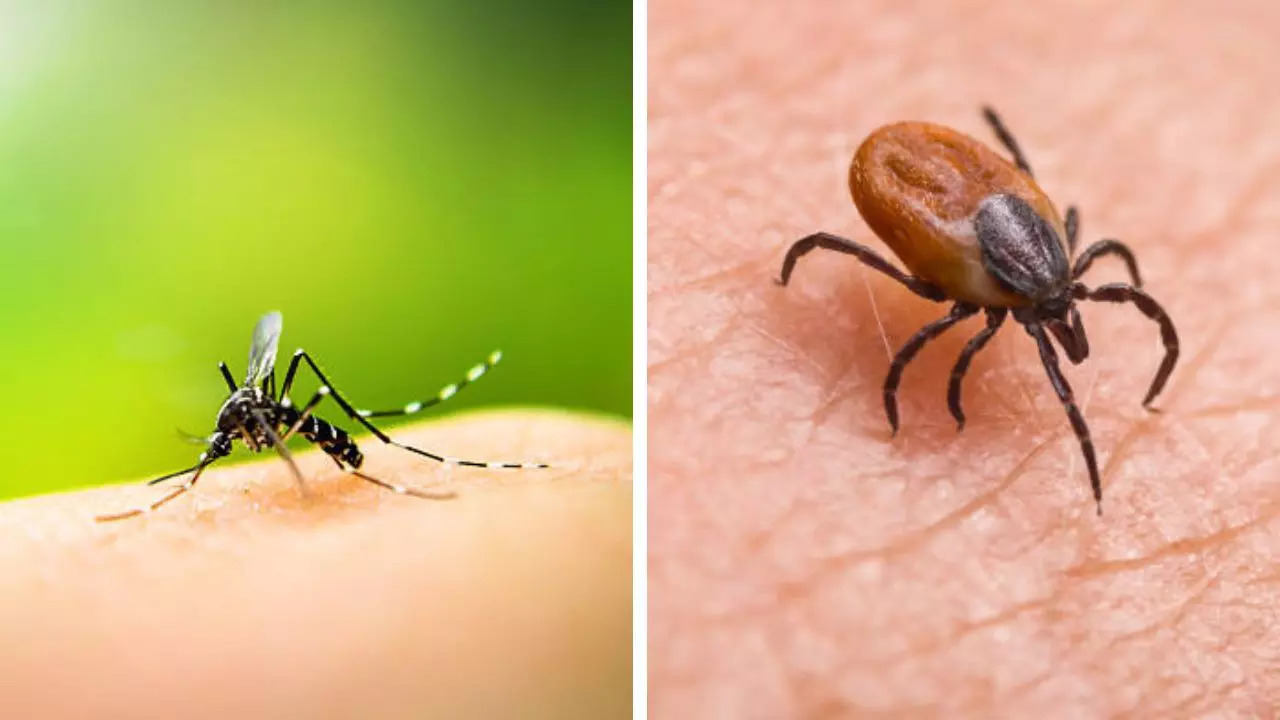Contents
From dengue to bleeding eye disease – 5 tropical diseases you can get in Europe this summer
Climate change – Higher temperatures and hotter summers are leading to the spread of various dangerous infections in European countries, which were previously restricted to tropical countries. According to experts, these deadly diseases, including dengue, chikungunya, Lyme disease and leishmaniasis, are spread by species of insects that previously found in colder places such as the UK and France are now breeding and thriving in the hot and humid climate. Read on to know more.

As temperatures rise, a variety of disease-carrying insects are moving north from places such as Africa, Asia, and Central and South America.
This year has been unprecedented for many European countries, grappling with serious infections and illnesses, most of which have been life-threatening. However, experts are warning of more serious infections that could potentially pose a threat to you during your summer holidays at the world’s favourite destination.
Scientists say that as temperatures rise, a range of disease-carrying insects are moving north from places such as Africa, Asia and Central and South America, spreading infections previously unheard of in colder regions.
Warm climate favours spread of infection
According to the most recent annual report from the European Centre for Disease Prevention and Control, three different types of disease-carrying mosquitoes, three types of infection-prone ticks and a dangerous fly species have become ‘established’ in many European countries. Since the climate is now more “suitable” for the breeding and spread of these pathogens, experts warn of a rapid spread of infections in parts of Europe.
“Many of these insect species prefer warm and humid weather. Warmer temperatures and longer breeding seasons allow their larvae to develop faster, leading to larger populations,” Dr Francois Balloux, from the University College of London Genetics Institute, told The Sun.
Beware of infections
The ECDC says it is tracking the spread of a variety of insects that can carry and spread several different viruses to humans. These include:
Dengue
Dengue, also known as bone-break fever, is a viral illness spread by certain types of mosquitoes in tropical and subtropical regions. It is caused by one of four dengue viruses, and symptoms usually begin within a few days of the bite but can take up to two weeks to develop.
Statistics show that around 400 million people are infected with dengue each year, but most – around 80 per cent – show no symptoms.
Doctors say the dengue virus destroys the parts of your blood that form clots and provide structure to your blood vessels. This, combined with certain chemicals made by your immune system, can cause your blood to leak out of your vessels and cause internal bleeding, leading to life-threatening symptoms of severe dengue that include high fever, rashes, body aches and even vomiting and nausea.
Chikungunya
Chikungunya is a viral disease that spreads to humans through the bite of an infected mosquito. It gets its name from the name Chikungunya. Kimakonde The term means walking bent because the infection causes severe joint and muscle pain. Other symptoms include fever, headache, muscle pain, swollen joints, and rash.
The infection has spread widely in popular holiday destinations such as Italy, France, Spain, Portugal, Greece, Cyprus, Croatia, Serbia, Montenegro, Bosnia and Herzegovina, Albania, North Macedonia, Romania, Bulgaria, Turkey and Portugal.
According to doctors, the best way to prevent chikungunya is to avoid mosquito bites in areas where the virus may be present. You can eliminate mosquito breeding sites by using insect repellents containing DEET or picaridin. Vaccination is also recommended for some travelers.
Crimean-Congo hemorrhagic fever
Spain, Bulgaria and Greece have seen an unprecedented rise in the number of CCHF – a tick-borne virus that causes severe bleeding and high fever. Although not very common, the infection, which causes flu-like symptoms leading to severe bleeding from the eyes and organ failure, is on the rise in Europe.
According to the World Health Organization, up to 40 percent of infected people die from this infection.
Last month, British scientists warned that the disease could spread beyond its usual area to Britain and France.
Leishmaniasis
Leishmaniasis, spread by phlebotomine sand flies – a common infection in rainforests and deserts – is now spreading in several European countries.
It causes skin lesions that can turn into painful ulcers in the nose, mouth and throat, causing scars that can permanently disfigure the patient. The most severe form of the disease affects internal organs such as the liver and spleen, causing fever, weight loss and anemia.
If it is not treated timely then it may lead to death.
Lyme disease
Lyme disease, spread by European deer ticks, has spread to most European countries this summer, including Britain and France. According to experts, bites from small ticks, usually found in grassy areas, can cause Lyme disease, a bacterial infection that spreads from infected ticks to humans.
Symptoms of Lyme disease include a circular or oval rash around the bite area as well as fatigue and flu-like symptoms. Although it can be treated with the help of antibiotics, if left untreated, the infection can spread to the heart, joints, and nervous system.
Get the latest news on Times Now as well as breaking news and top headlines from across health and the world.


